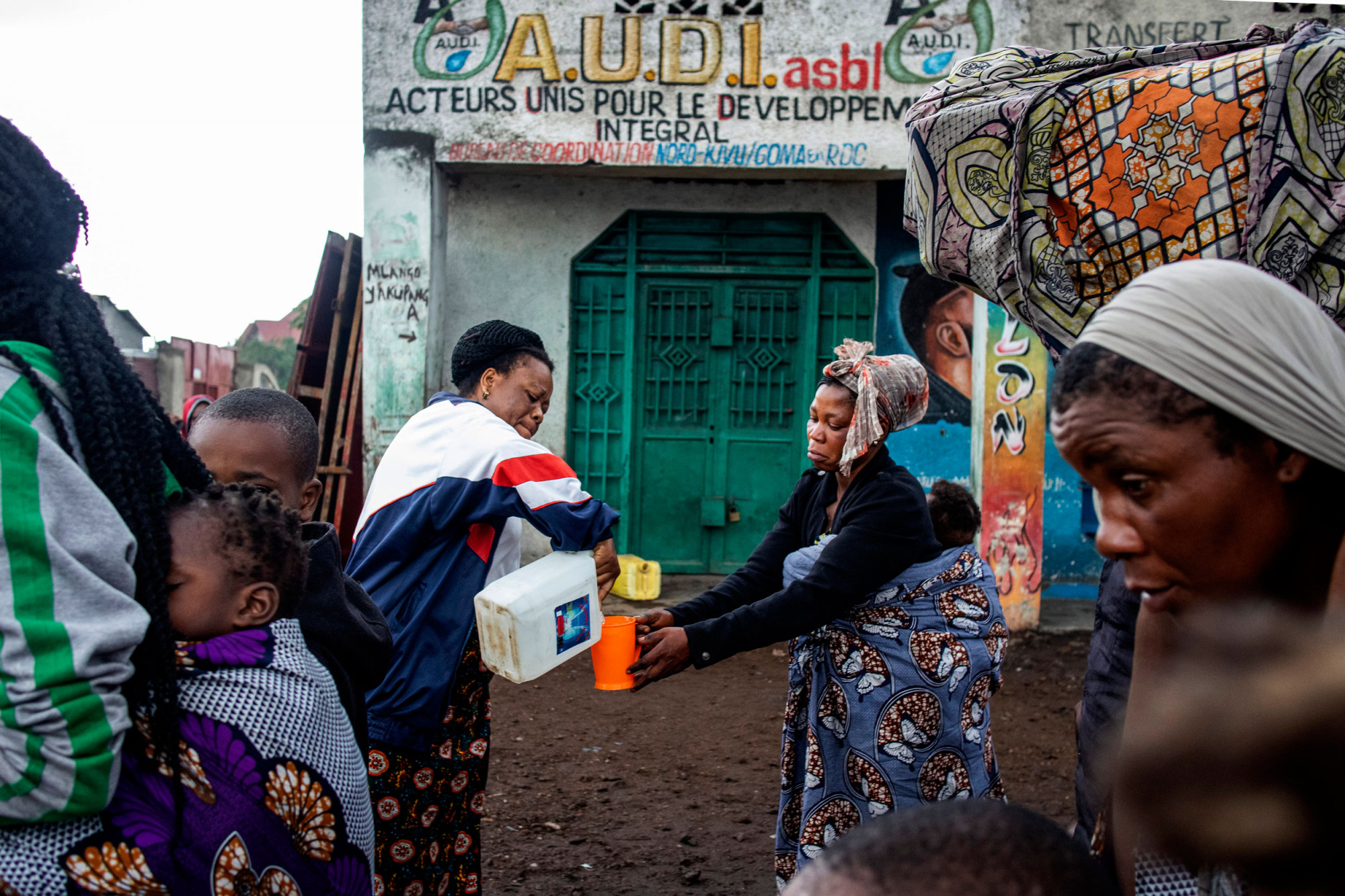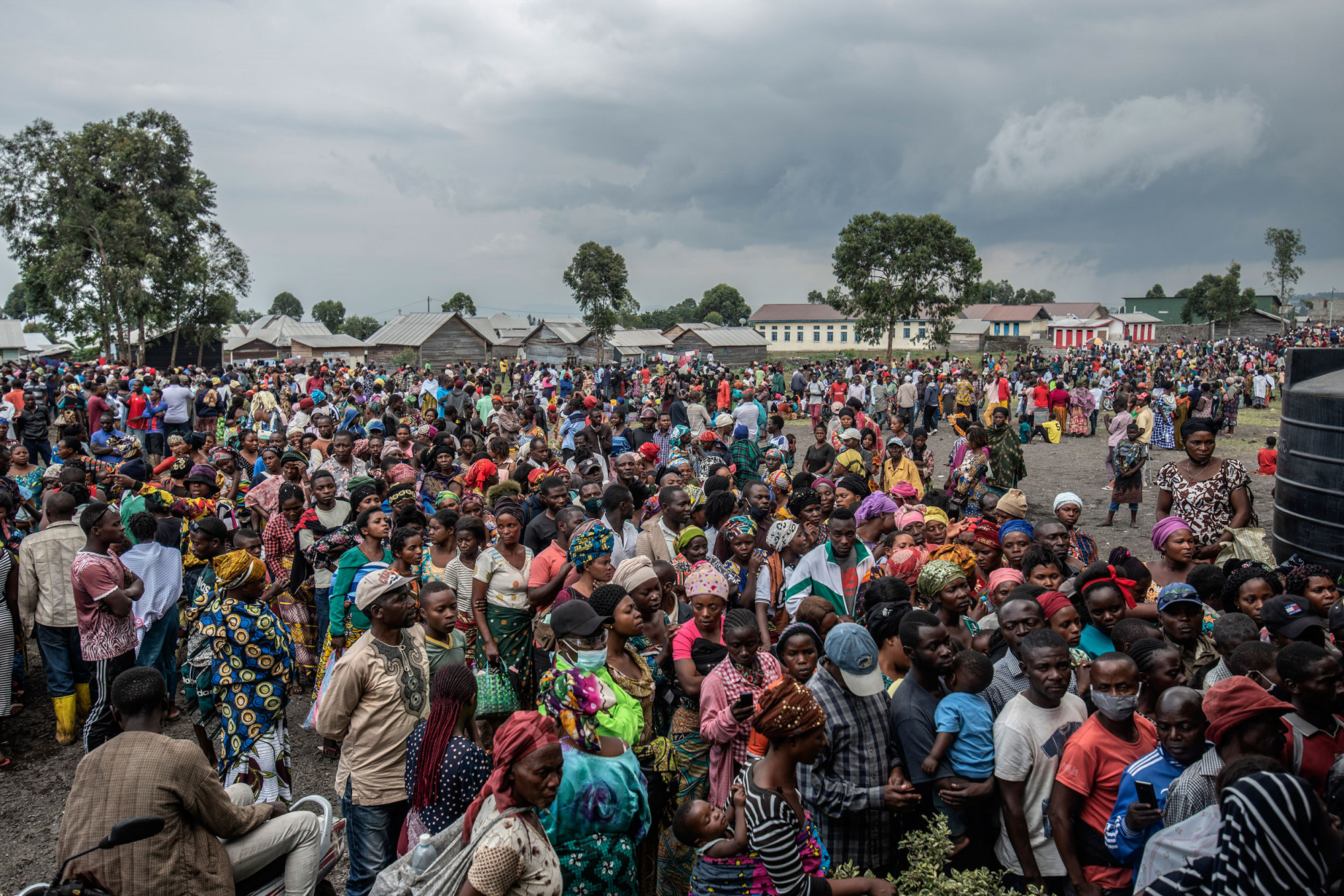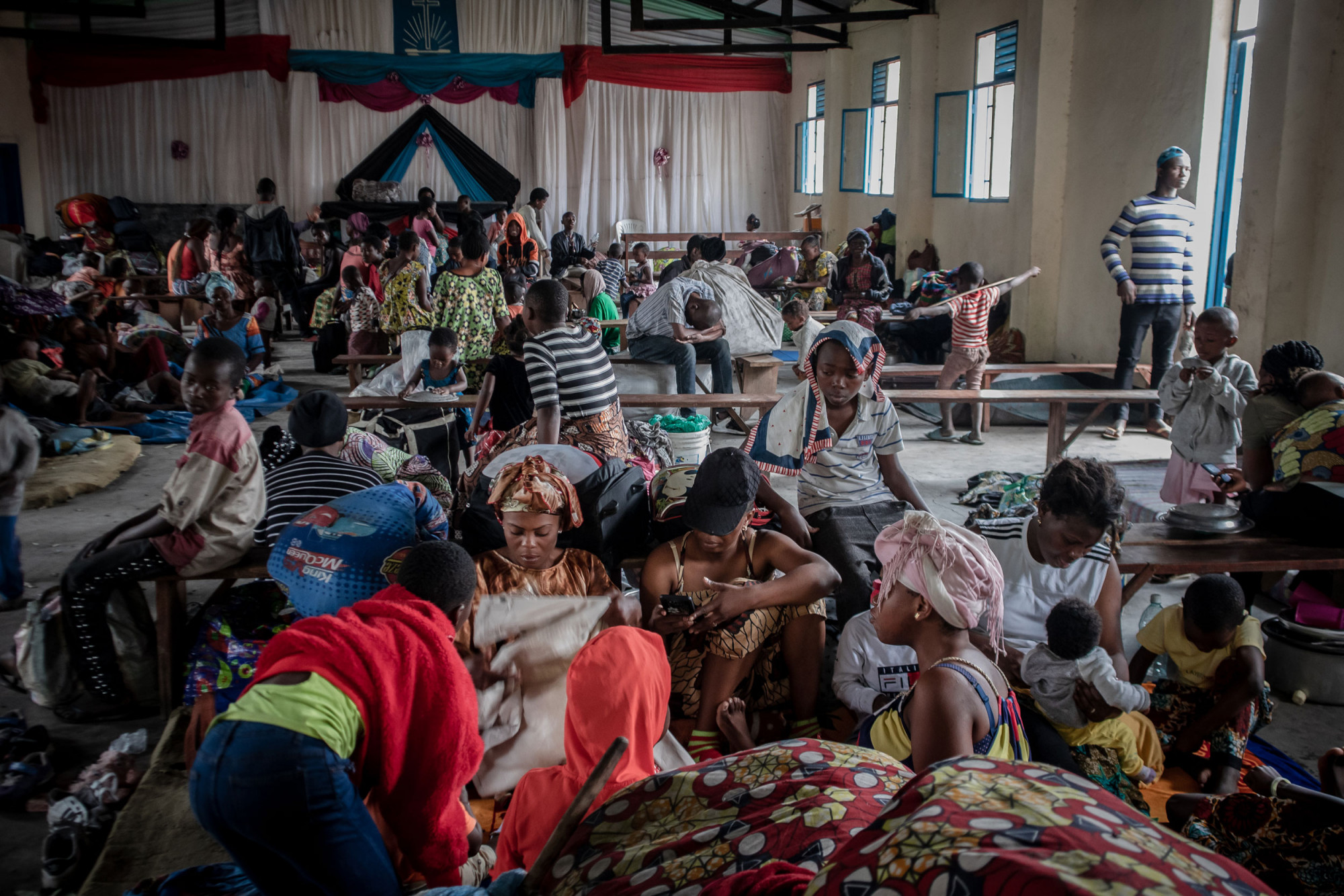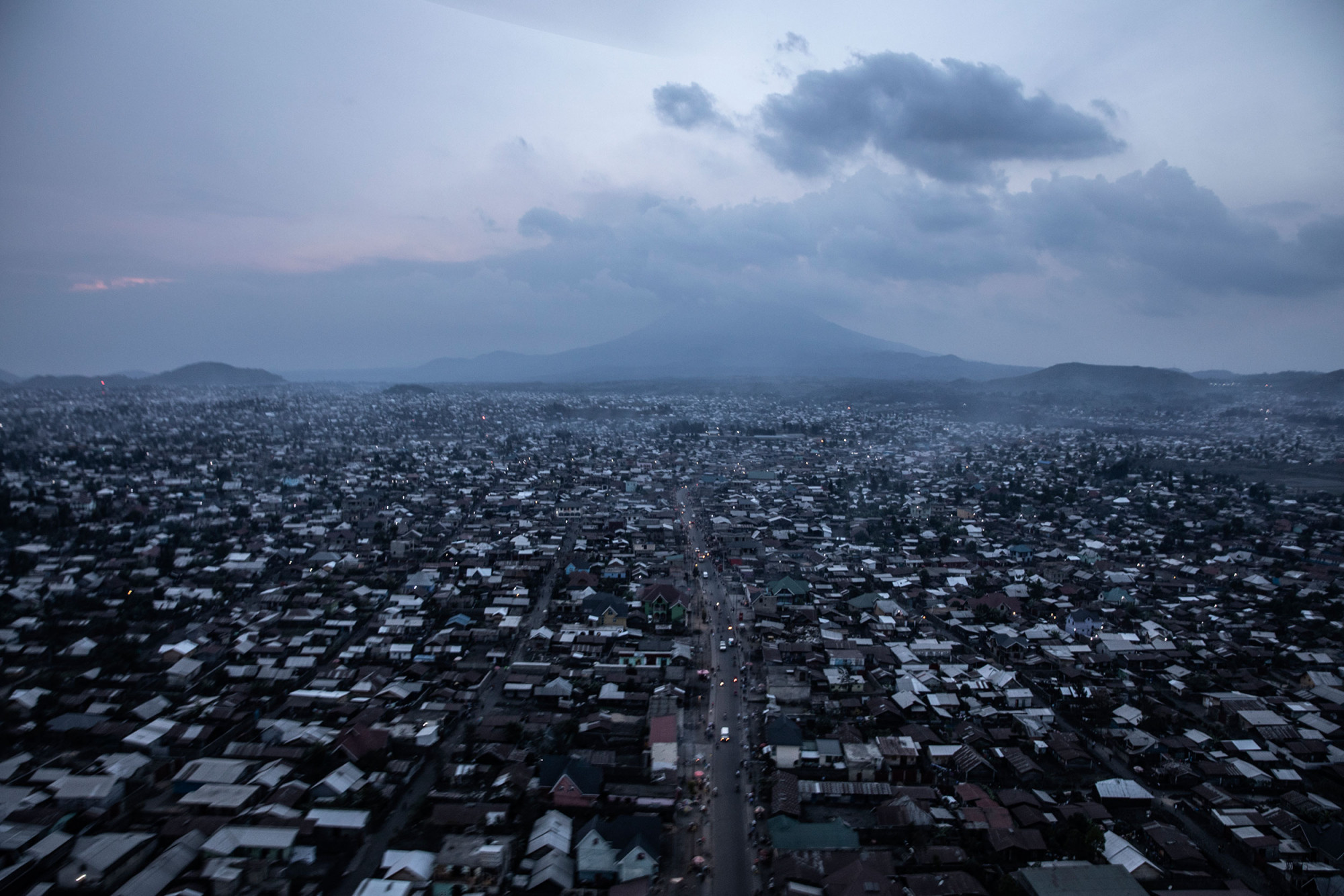

Goma, June 2, 2021
Reading time:
16 min
On the street below, crowds of people were streaming past carrying belongings. Within minutes, news spread that Nyiragongo volcano was erupting for the first time in nearly two decades. A river of lava was pouring downhill in the direction of Ndebo’s neighbourhood. He ran back down to his apartment, and grabbed his camera gear and headed out the door to shoot. But he quickly turned around, realizing he’d forgotten the memory card. He bolted out again, but had to return twice more for his camera strap, and for a bag with his computer.
“It was stressful and I couldn’t think straight at first, but then once I started photographing, I felt more calm and focused,” Ndebo said. “It confirmed that photography is the right job for me.”
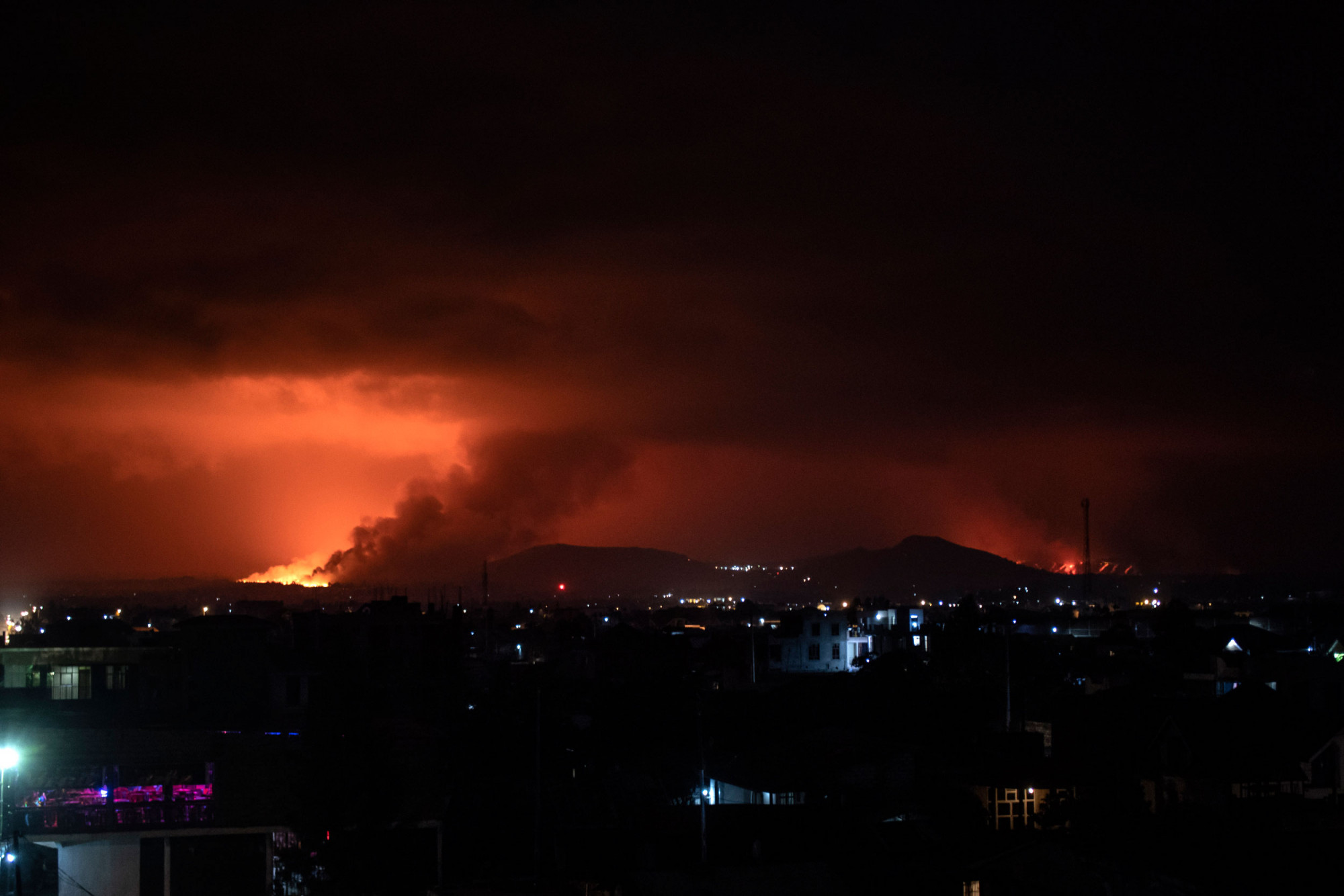
Across town, Arlette Bashizi and Moses Sawasawa were on a bus returning from taking photos for a story they were working on when they too saw the glowing sky. Bashizi rushed home to check on her family and urged Sawasawa to do likewise.
I (Finbarr O' Reilly, Editor's note) was at a lakeside restaurant when a man entered and announced the news of the eruption. Planning a night off, I had left my cameras on the other side of town and only had a small mirrorless camera with me. I hopped on a motorcycle taxi and rushed to meet Ndebo in the center of town, where thousands of confused residents were rushing in various directions, hauling with them bags of belongings, mattresses, livestock, and frightened children. The last eruption in 2002 destroyed one third of the city, killed more than 200 people, and left more than 100,000 people homeless.




Sawasawa joined me and Ndebo shortly afterwards and together we documented the chaos of the panicked exodus from town. With conflicting information, people were begging to know which direction to flee – east across the border to Rwanda, or west toward higher ground near the town of Sake.
The glowing wall of lava from Mount Nyiragongo, one of the world’s most active and dangerous volcanos, stopped just short of the city center and Goma’s international airport, but destroyed 17 villages and left at least thirty-two people dead. Up to 20,000 people lost their homes. Many people returned to town the following morning once the lava had stopped flowing, but several hundred aftershocks in the following days kept residents on edge. Panic ensued again five days after the initial eruption when the government issued a midnight order to evacuate much of the city for fear of another eruption. There was also the threat of a rare limnic eruption. Lake Kivu holds vast underwater gas reserves of both carbon dioxide and methane. If released by an earthquake or contact with molten lava, the gases could explode or unleash vast poisonous clouds that would kill any living being within dozens of kilometers. This time, nearly half a million people fled to Rwanda and the town of Sake, 20 kilometers west of Goma, where there are few facilities to accommodate the displaced. Some 1,361 children were separated from their parents during the chaos and the Red Cross and UNICEF worked to reunite families.



More than 232,400 people were displaced to Sake, Rutshuru, Lubero, Minova and Bukavu, and half a million displaced were without clean drinking water as the few humanitarian agencies that remained operational struggled to meet the needs of so many who had fled with few possessions.
In the neighborhood of Buhene, which was covered by lava on the night of the eruption, schoolteacher Judith Kyakimwe-Meso, 33, pointed to where her schoolhouse and her home used to stand. “My house was on this hill here beside those burning trees,” she said while overlooking the charred landscape still smoldering almost a week after the eruption. “Now my two children and I have nothing, it’s all gone. We are hungry and thirsty but have no money to go anywhere. We should have just died because now we can just die slowly instead of quickly in the lava.”
Throughout the crisis, Congo in Conversation contributors worked together, sharing information and security advice, as well as camera equipment and laptops, while covering unfolding events for various global media outlets and humanitarian agencies.
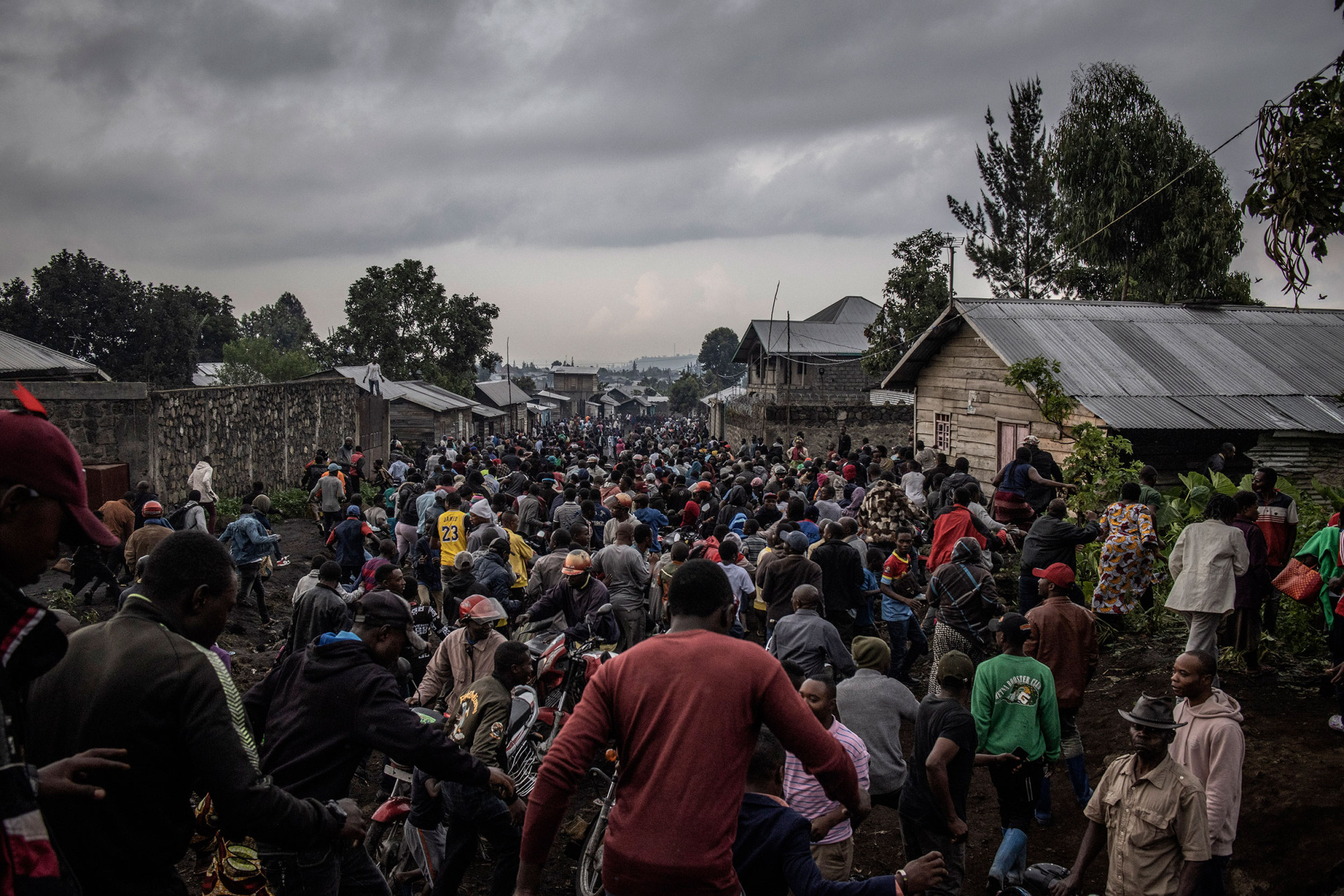
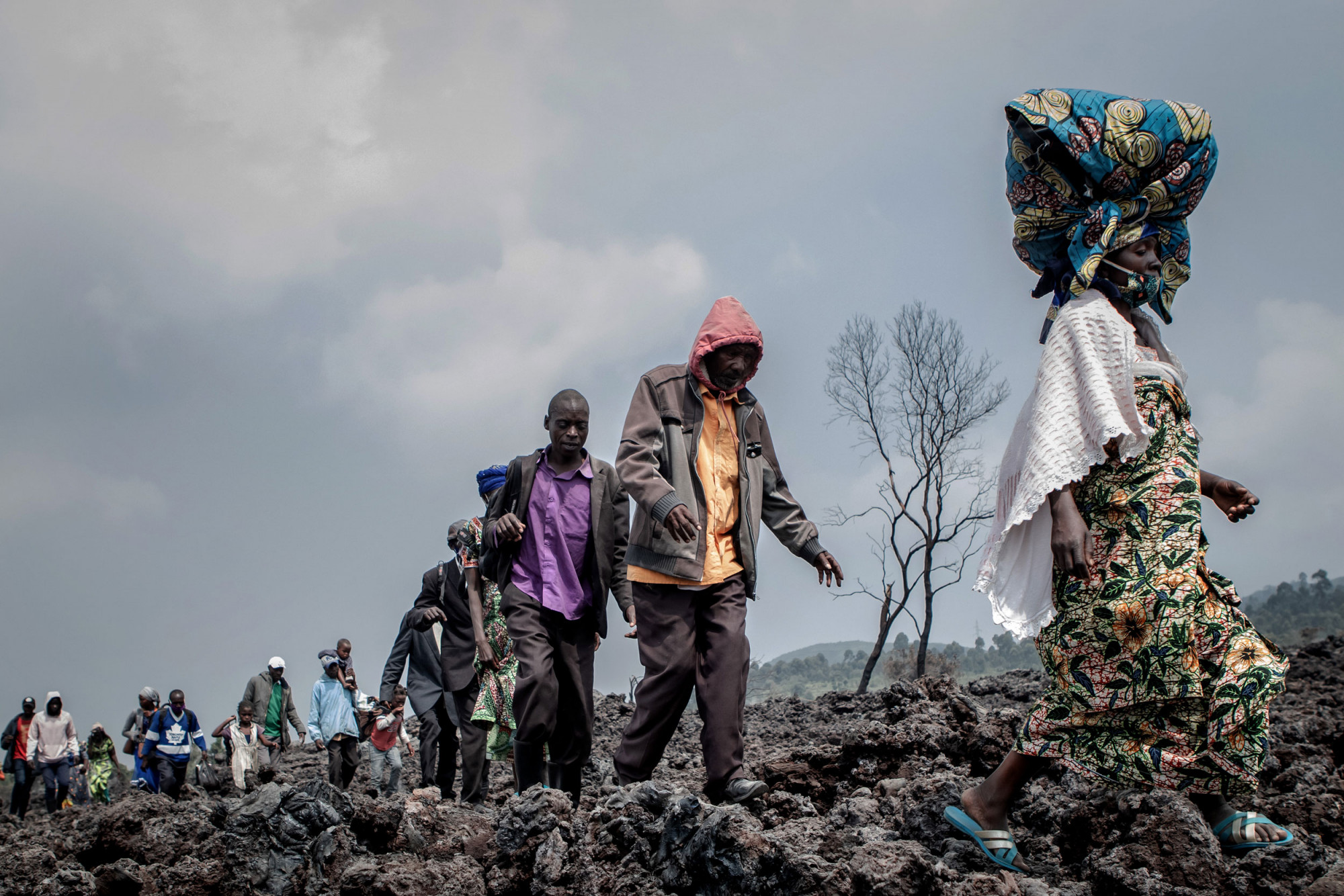
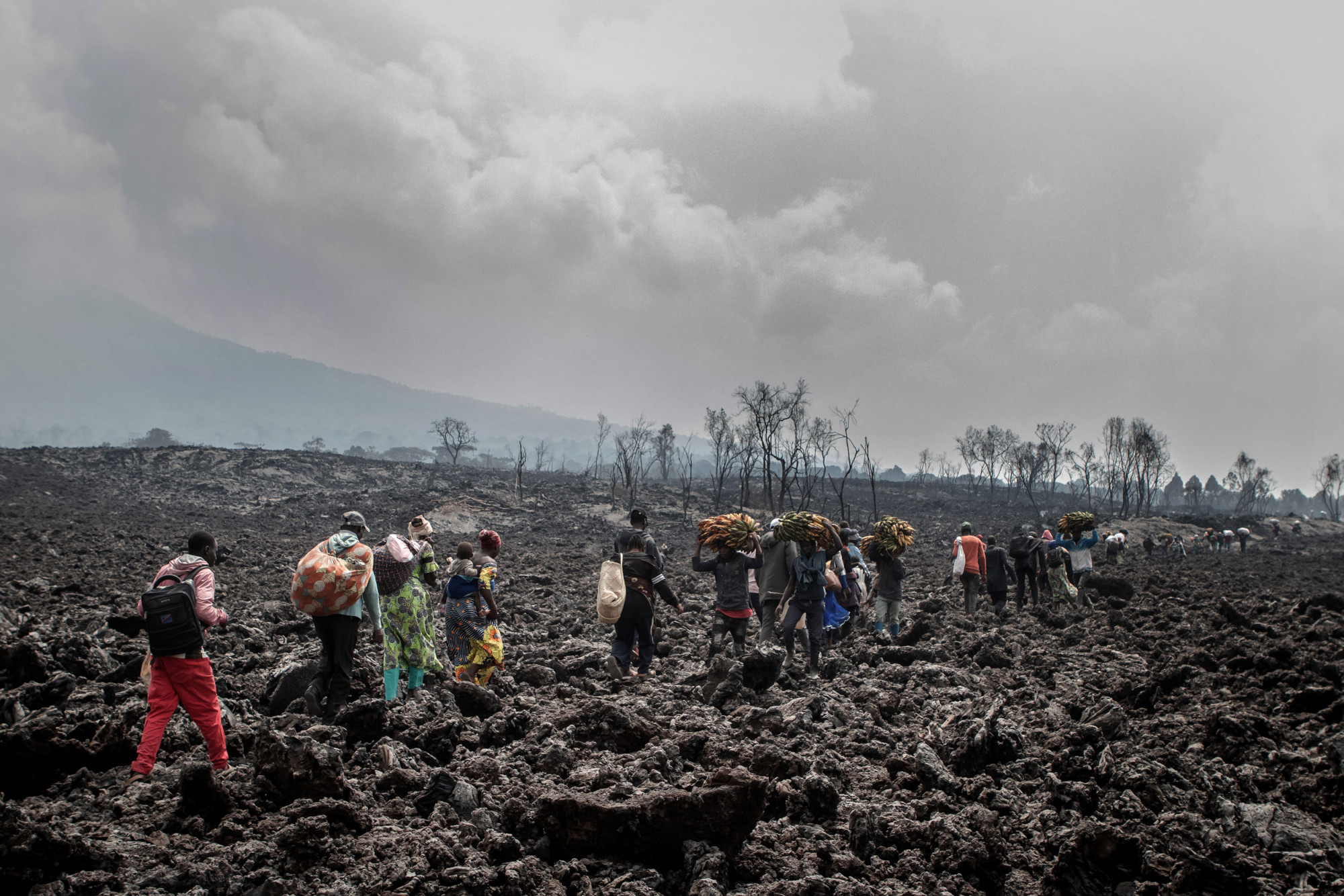
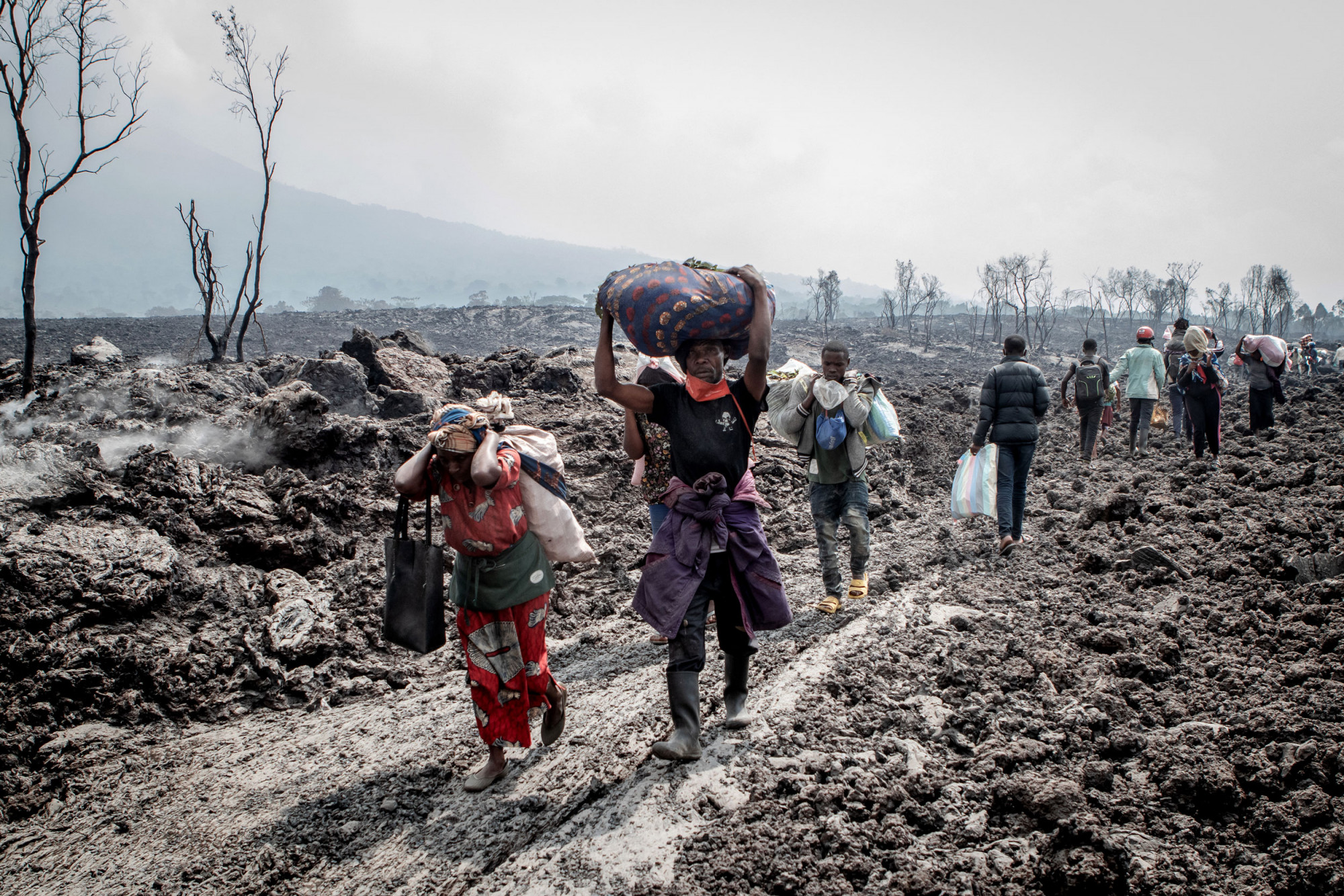
Within hours of the eruption, Ndebo and Sawasawa were filing a steady stream of images to editors at Agence France-Presse. Their photographs were widely published around the world, including by National Geographic, Time Magazine, The New York Times, The Washington Post, and Al Jazeera. Moses Sawasawa also worked for The Associated Press in the days immediately after the eruption and was later hired by MSF to document relief efforts. I also reported for The New York Times.
Beyond the breaking news, Arlette Bashizi and Bernadette Vivuya were hired by UNICEF to cover the humanitarian situation. Ley Uwera’s work was featured in The New Humanitarian while Clarice Butsapu’s work was also published by the AP.
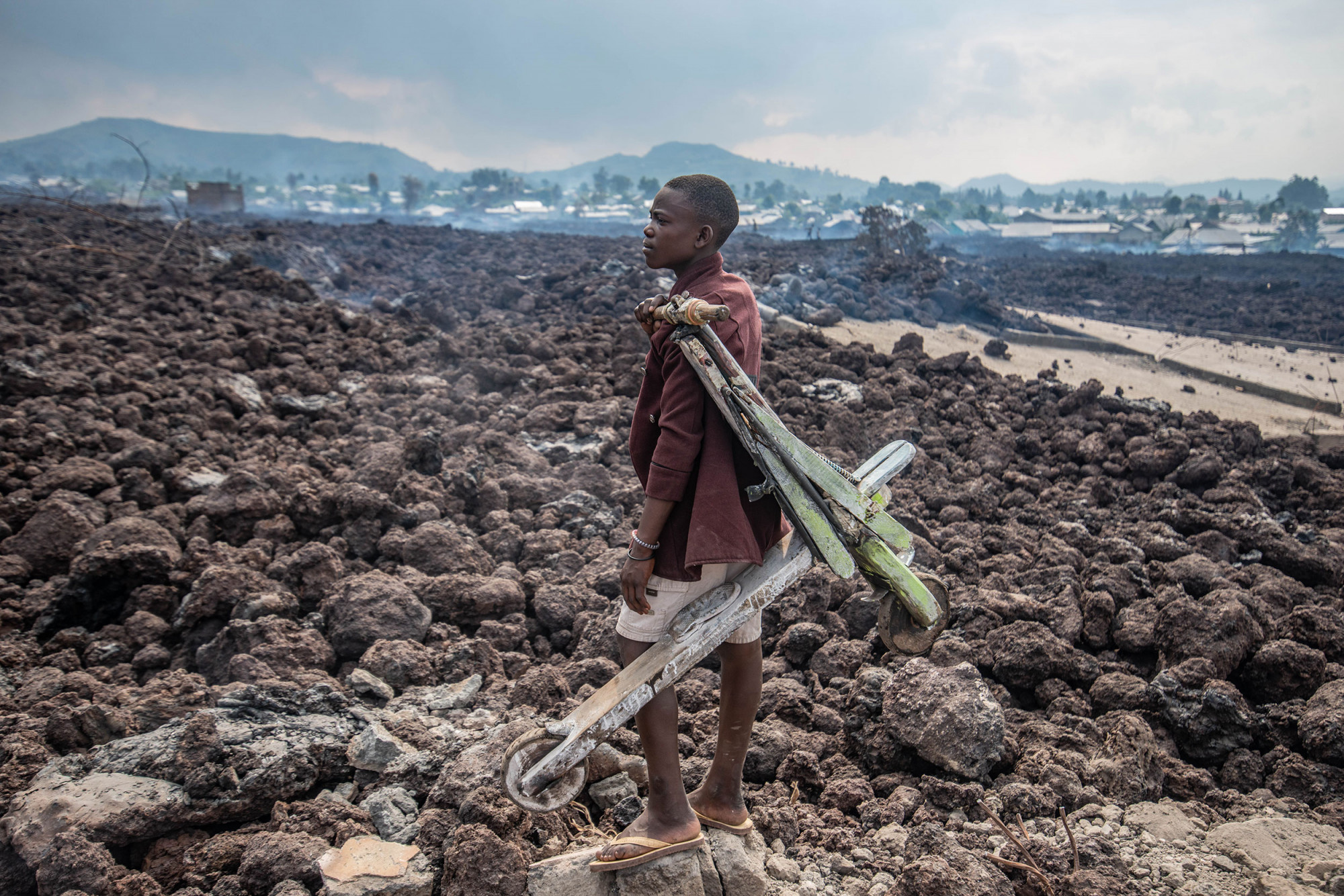
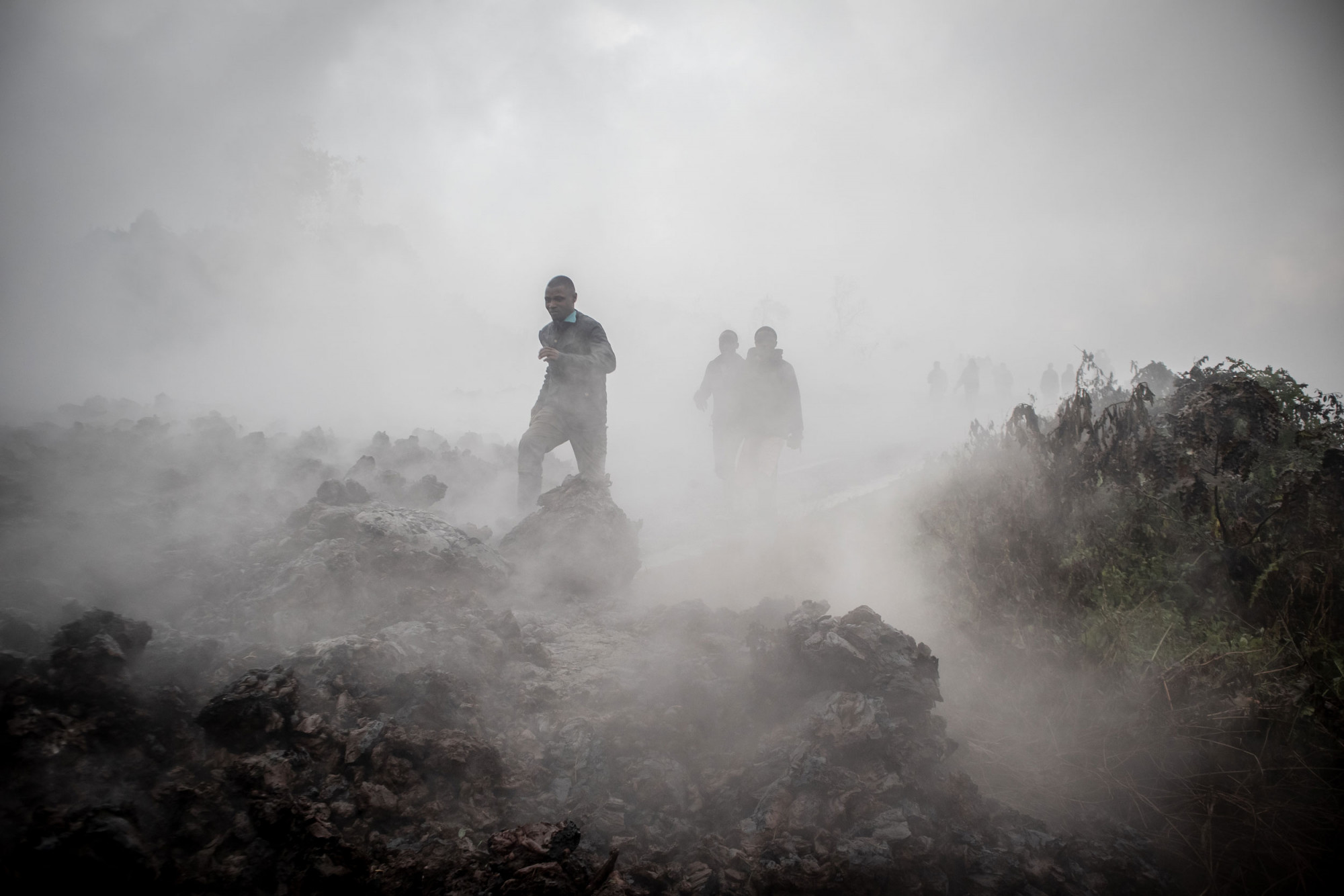
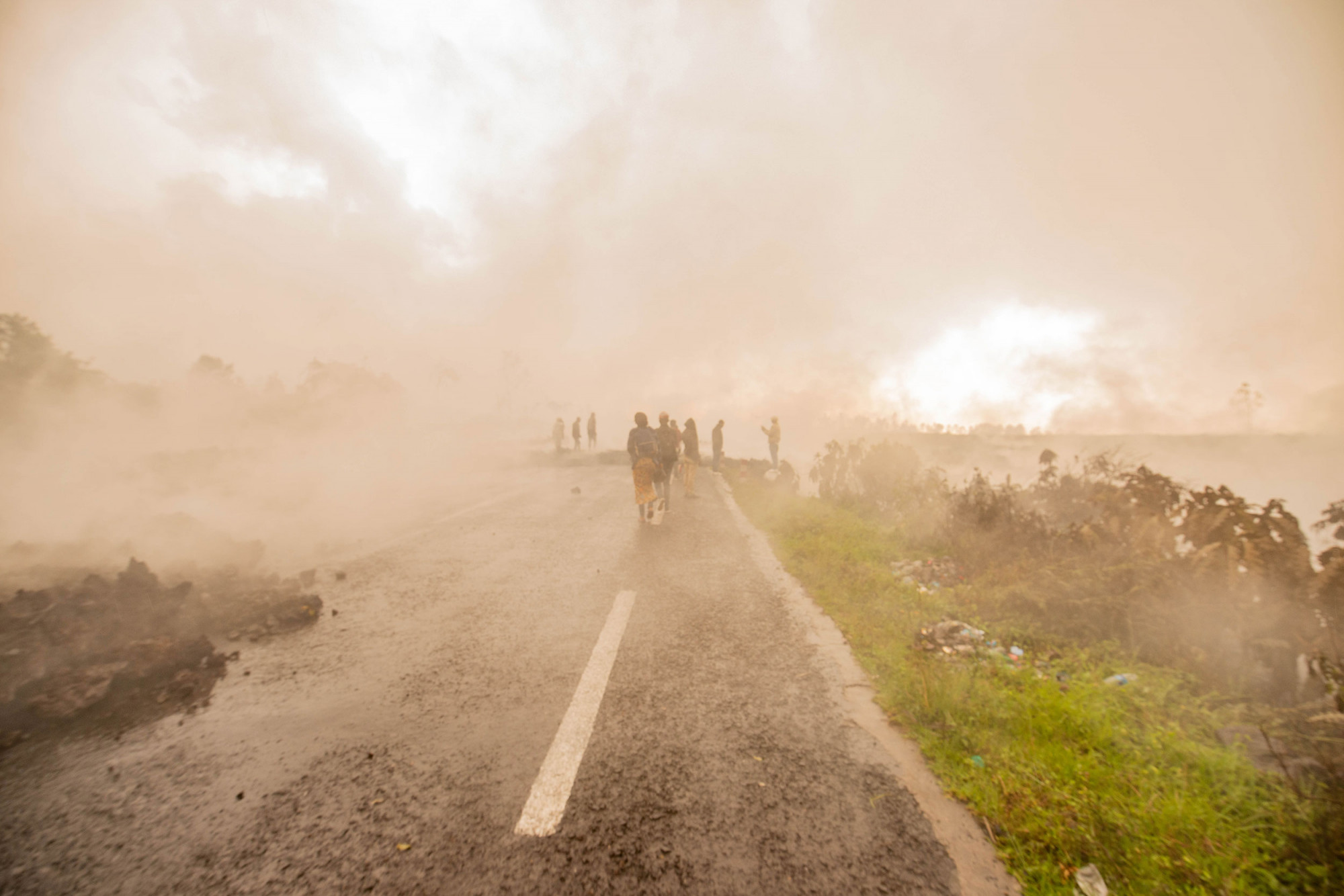
Collectively, their work has shown international audiences what happened during the eruption, the continuing human toll during the aftermath, and ongoing efforts as the city once again begins to rebuild.
